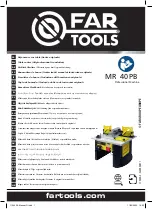
About the CSX200
12
CSX200 Family User’s Guide
In half-duplex operation, the authenticator device challenges the peer device by generating a
CHAP challenge, and the challenge contains an MD5 algorithm with a random number that has
your encrypted password and system name. The peer device then applies a one-way hash
algorithm to the random number and returns this encrypted information along with the system
name in the CHAP response. The authenticator then runs the same algorithm and compares the
result with the expected value. This authentication method depends upon a password or secret,
known only to both ends locally.
Full-duplex operation places an additional step to half-duplex operation that mirrors the operation
discussed above for a peer to validate the authenticator. The peer device challenges the
authenticator by generating a CHAP challenge, and the authenticator returns a CHAP response.
The peer device challenges the authenticator device by generating a CHAP challenge, and the
challenge contains an MD5 algorithm with a random number that has your encrypted password
and system name. The authenticator device then applies a one-way hash algorithm to the random
number and returns this encrypted information along with the system name in the CHAP response.
The peer device then runs the same algorithm and compares the result with the expected value.
This authentication method depends upon a password or secret, known only to both ends locally.
LQM
Link Quality Monitoring (LQM) is a link control mechanism used with PPP to determine when
and how often a link is dropping data in units of packets and octets. Link Quality Monitoring
accomplishes this by providing Link-Quality-Reports to determine if the quality of the link is
adequate for operation. Link Quality Monitoring provides separate measurements for both
incoming and outgoing packets that are communicated to both ends of the link. The PPP LQM
mechanism carefully defines the Link-Quality-Report packet formats, and specifies reference
points for all data transmission and reception measurements. The LQM implementation maintains
successfully received packet and octet counts, and periodically transmits this information to its
peer using Link-Quality-Report packets.
HDSL
High-bit rate Digital Subscriber Line (HDSL) technology uses existing copper twisted pair cables
designed for conventional analog voice transmission from a telephone carrier servicing area as
low-cost alternative to the quality and speed of fiber optic cables, and provides high-speed
full-duplex digital transmission links of up to 1.544 Mbps. The WPIM-HDSL is easy to install in
your network over existing telephone lines, and it is a portable investment if a business, or
individual user plans to relocate.
Summary of Contents for CSX200 CyberSWITCH
Page 1: ...CSX200 FAMILY USER S GUIDE 2012 01 ...
Page 2: ......
Page 14: ...Contents xii CSX200 Family User s Guide ...
Page 50: ...Installation 36 CSX200 Family User s Guide ...
Page 186: ...WAN Configuration Using Local Management 172 CSX200 Family User s Guide ...
Page 214: ...MIB Navigator 200 CSX200 Family User s Guide ...
Page 226: ...Troubleshooting 212 CSX200 Family User s Guide ...
Page 242: ...WPIM Cable Specifications 228 CSX200 Family User s Guide ...
















































